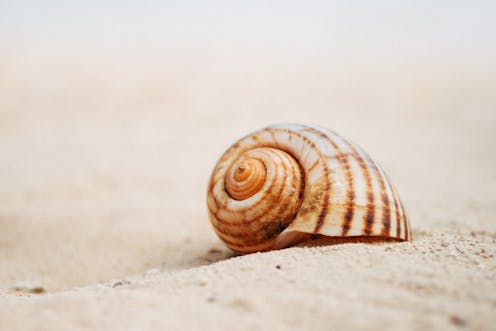
Why do seashells make a sound like the ocean when you put them to your ear? – Remy, age 9, Wangaratta, Victoria
Thanks for the great question Remy!
My kids and I have collected a lot of seashells and we love listening to them to remind us of the sea.
But the seashells are not actually making any sounds themselves. So what’s going on?
Seashells ‘catch’ sounds
Each seashell is a unique shape. Hollow and curved ones can “catch” some of the sounds around you. That’s when sound enters the opening of the shell.
Once in the shell, these sounds bounce around. This makes the sounds get slightly louder (or amplified) before they leave the shell.
The sounds seashells “catch” tend to be what scientists call lower-frequency sounds. Think of these as deeper, or more rumbling sounds.
The sound of the ocean is also a low-frequency sound. That’s why it sounds similar to the sounds caught in a shell.
Read more: Curious Kids: how do shells get made?
But why can I hear it?
The sound you hear when you put a shell against your ear is actually parts of the background noise around you, just turned up a little by the shell.
So if you’re next to the ocean, the shell picks up the sounds of the ocean. If you’re nowhere near the ocean, the shell picks up other deep and rumbling sounds, such as the wind or the fridge.
There is nearly always some kind of background noise around us the shell can pick up, even when it is very quiet.
As the shell turns up the sound, this means you can hear it over the other background noise around you.
It’s not just seashells
Sounds are turned up all the time in nature. It’s not just with seashells.
In fact, our own ears are shaped to make important sounds around louder for us.
If you hold an empty cup to your ear, you might also hear a sound like the sea. But there is something special about holding a seashell in your hand, knowing it is from the beach. Sometimes the shell even smells like the beach.
Even though it is not actually the sound of the sea you are hearing, if you close your eyes and listen closely it can almost feel like you are back sitting by the water.
Read more: Curious Kids: why are there waves?
Chris Brennan-Jones receives funding for research from the NHMRC and the Western Australian Department of Health.
This article was originally published on The Conversation. Read the original article.








